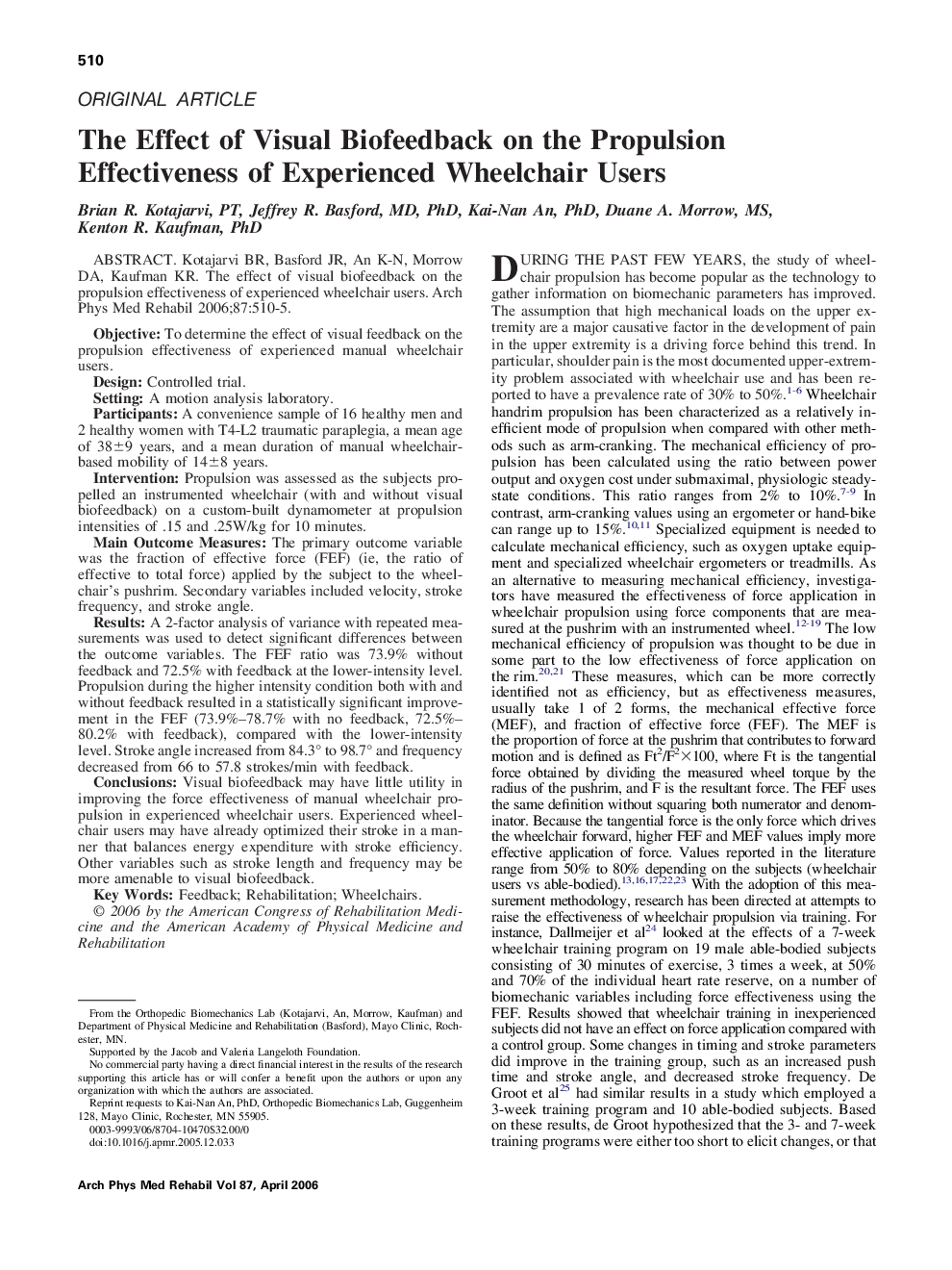| کد مقاله | کد نشریه | سال انتشار | مقاله انگلیسی | نسخه تمام متن |
|---|---|---|---|---|
| 3453228 | 1595808 | 2006 | 6 صفحه PDF | دانلود رایگان |

Kotajarvi BR, Basford JR, An K-N, Morrow DA, Kaufman KR. The effect of visual biofeedback on the propulsion effectiveness of experienced wheelchair users.ObjectiveTo determine the effect of visual feedback on the propulsion effectiveness of experienced manual wheelchair users.DesignControlled trial.SettingA motion analysis laboratory.ParticipantsA convenience sample of 16 healthy men and 2 healthy women with T4-L2 traumatic paraplegia, a mean age of 38±9 years, and a mean duration of manual wheelchair-based mobility of 14±8 years.InterventionPropulsion was assessed as the subjects propelled an instrumented wheelchair (with and without visual biofeedback) on a custom-built dynamometer at propulsion intensities of .15 and .25W/kg for 10 minutes.Main Outcome MeasuresThe primary outcome variable was the fraction of effective force (FEF) (ie, the ratio of effective to total force) applied by the subject to the wheelchair’s pushrim. Secondary variables included velocity, stroke frequency, and stroke angle.ResultsA 2-factor analysis of variance with repeated measurements was used to detect significant differences between the outcome variables. The FEF ratio was 73.9% without feedback and 72.5% with feedback at the lower-intensity level. Propulsion during the higher intensity condition both with and without feedback resulted in a statistically significant improvement in the FEF (73.9%–78.7% with no feedback, 72.5%–80.2% with feedback), compared with the lower-intensity level. Stroke angle increased from 84.3° to 98.7° and frequency decreased from 66 to 57.8 strokes/min with feedback.ConclusionsVisual biofeedback may have little utility in improving the force effectiveness of manual wheelchair propulsion in experienced wheelchair users. Experienced wheelchair users may have already optimized their stroke in a manner that balances energy expenditure with stroke efficiency. Other variables such as stroke length and frequency may be more amenable to visual biofeedback.
Journal: Archives of Physical Medicine and Rehabilitation - Volume 87, Issue 4, April 2006, Pages 510–515